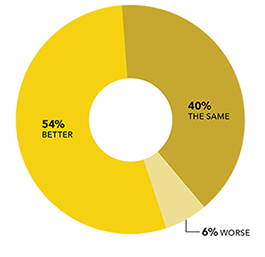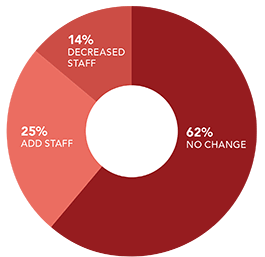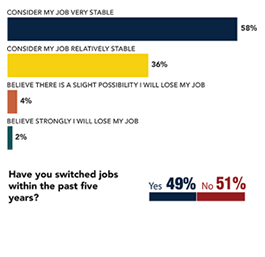2019 Job Outlook: ‘Selling’ the safety profession
Professional organizations and safety pros work to raise the profile of OSH

In many respects, the occupational safety and health profession is slowly coming into its own, shedding its past as a compliance-driven afterthought and taking its place as a crucial component of business.
“Years ago, you’d never hear the words ‘chief safety officer,’” said Carl Heinlein, senior safety consultant for the American Contractors Insurance Group and director at large for the American Society of Safety Professionals. “Now you’re seeing safety professionals in the C-suite that are involved in strategic decision-making day in and day out.”
Although some indicators suggest the profession is arriving, others show it’s not quite there yet. John Dony, director of the Campbell Institute and environmental, health and safety at the National Safety Council, points to the most recent data from the Bureau of Labor Statistics. It shows a slight increase in preventable worker fatalities, to 4,414 deaths in 2017 from 4,398 in 2016, according to an NSC analysis.
Analysis of preventable work deaths in Injury Facts, a reference source for safety statistics published by the National Safety Council.
“These numbers are unacceptable,” Dony said, noting that improvement will depend on a healthy supply of well-qualified safety professionals. “We have seen that organizations that go beyond safety compliance and put safety management systems in place are best positioned to keep their workers safe. These systems require trained OSH professionals to run them smoothly.”
Despite rising demand for safety professionals, however, awareness among the general public – and thus the number of graduates entering the profession – has yet to catch up.
| What's the Job Outlook for Safety+Health readers? Browse the results of our 2019 survey. | ||
 Job market |
 Department staffing |
 Personal outlook |
Addressing the shortage
NIOSH’s most recent National Assessment of the Occupational Safety and Health Workforce, published in 2011, found that demand for safety professionals was significantly outpacing supply. Employers reported that they had planned to hire more than 25,000 OSH professionals in the five years after the survey, while academic programs in the field expected to graduate fewer than 13,000 qualified job candidates.
Compounding the problem, employers expected 10 percent of safety professionals to retire within a year after the survey, and 48 percent of the occupational safety workforce was at least 50 years old, which means that many more now are nearing retirement.
Why is it that more students aren’t entering the safety profession? For one, many simply don’t know it exists. When asked what obstacles kept students away from OSH, 59 percent of educational providers who responded to the NIOSH survey cited a lack of knowledge of the programs.
“If you ask a young child what they’d like to be when they grow up, you hear things like fireman, police officer, doctor, lawyer,” Heinlein said. “You typically don’t hear safety professional.”
He attributes some of the lack of public awareness to the fact that workplace safety doesn’t make for splashy headlines. “Typically what you see in the news is that there’s been an accident or incident,” Heinlein said, “not that an organization went three years without an injury or five years without an environmental issue.”
Peter Dooley is senior project coordinator at the National Council for Occupational Safety and Health, a worker advocacy group. Dooley said he believes the public may not be aware of the need for safety professionals because the risks workers face on a daily basis are a bit of a dirty secret.
“It’s a hidden epidemic that work can be so dangerous and cause so much harm,” he said.
Even those who are clued into safety professionals’ existence may not understand what they actually do. “There is a lack of awareness of safety being more than the absence of harm – that ensuring safety requires a defined program, organizational implementation and employee engagement,” said Treasa M. Turnbeaugh, CEO of the Board of Certified Safety Professionals.
To maintain the profession’s growing momentum and ensure a good supply of well-trained graduates, experts believe the case for OSH needs to be made more widely to employers, to academic institutions and especially to young people.
“The future is bright for this profession,” Heinlein said. “So the question is, how do we help sell the industry?”
| Next: Making the case to employers, academia and students | > |
Post a comment to this article
Safety+Health welcomes comments that promote respectful dialogue. Please stay on topic. Comments that contain personal attacks, profanity or abusive language – or those aggressively promoting products or services – will be removed. We reserve the right to determine which comments violate our comment policy. (Anonymous comments are welcome; merely skip the “name” field in the comment box. An email address is required but will not be included with your comment.)

